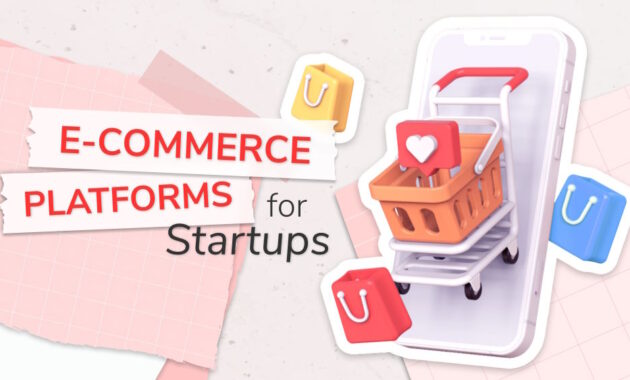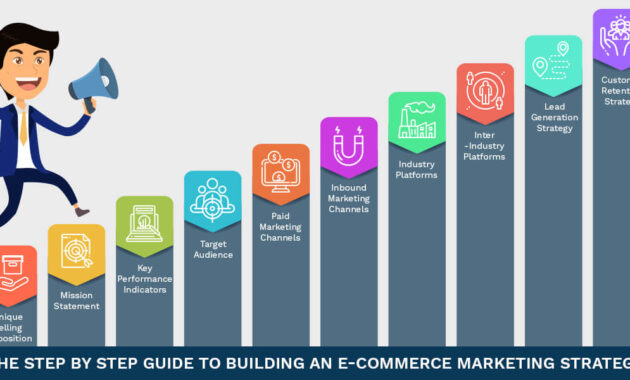In today’s digital-first world, launching an online business is more accessible than ever. E-commerce has become the go-to platform for startups looking to sell products and services to a global audience. However, choosing the right e-commerce solution is critical to building a successful and scalable business.
This guide is designed specifically for startups, helping you navigate the landscape of e-commerce platforms, tools, and strategies so you can make informed decisions from the very beginning.
What Are E-Commerce Solutions?

E-commerce solutions refer to platforms, software, and tools that allow businesses to sell products or services online. These solutions typically include website builders, shopping carts, payment gateways, inventory management, shipping integration, marketing tools, and analytics.
Why E-Commerce Solutions Matter for Startups
- Cost-effective way to reach customers
- Scalable operations for growing businesses
- Access to powerful marketing tools
- Reduced dependency on physical retail
- Faster time to market with digital products
Key Features Every Startup Needs in an E-Commerce Solution
Choosing an e-commerce solution means evaluating what your startup needs today—and in the future. Here are the essential features to look for:
1. User-Friendly Interface
Startups often lack technical resources. An easy-to-use platform helps launch your store quickly with minimal coding knowledge.
2. Mobile Responsiveness
More than 60% of online shoppers buy via smartphones. A mobile-optimized platform is a must.
3. Secure Payment Gateway Integration
Offer multiple secure payment options like credit/debit cards, PayPal, Apple Pay, or digital wallets.
4. Inventory Management

Track your stock levels in real-time, manage SKUs, and set up alerts for low inventory.
5. SEO Tools
SEO-friendly architecture, meta tags, alt texts, and clean URLs help your site rank better on search engines.
6. Customizable Themes
Branding is key. Choose a platform that lets you design your store to reflect your brand’s identity.
7. Analytics and Reporting
Built-in tools to track performance, traffic sources, conversion rates, and customer behavior.
8. Scalability
Your platform should grow with you. Make sure it can handle increased traffic and product listings as you scale.
Popular E-Commerce Platforms for Startups

Shopify
- Ideal for beginners
- Wide range of themes and apps
- Excellent customer support
- Monthly subscription cost
WooCommerce
- Built on WordPress
- Highly customizable
- Open-source and free to use (hosting not included)
- Requires some technical skills
Wix eCommerce
- Drag-and-drop builder
- Budget-friendly
- Suitable for small catalogs
- Limited customization
BigCommerce
- Scalable and robust
- Built-in SEO features
- More suited for medium to large stores
- Higher pricing plans
Squarespace
- Stylish and clean templates
- Easy setup
- Best for creatives and small businesses
- Limited e-commerce features compared to others
E-Commerce Solutions for Specific Startup Needs
For Dropshipping
- Shopify + Oberlo
- WooCommerce + AliDropship
These platforms integrate easily with suppliers and automate inventory syncing and order fulfillment.
For Digital Products
- Gumroad
- Sellfy
- Payhip
They simplify the sale and delivery of eBooks, music, software, or courses.
For Subscription Models
- Subbly
- Bold Subscriptions (Shopify app)
Perfect for startups offering recurring services, products, or membership access.
For Marketplaces
- Sharetribe
- CS-Cart Multi-Vendor
Allow multiple sellers to list products, making it easy to build platforms like Etsy or Fiverr.
Step-by-Step Guide to Launching Your E-Commerce Store
Step 1: Choose Your Business Model
Decide whether you’ll sell physical products, digital downloads, services, or subscriptions. Choose between dropshipping, self-fulfillment, or third-party logistics (3PL).
Step 2: Select a Domain Name and Hosting Provider
A memorable domain boosts your brand’s visibility. For platforms like WooCommerce, reliable hosting is essential.
Step 3: Pick the Right E-Commerce Platform
Choose based on your technical ability, budget, scalability, and desired features.
Step 4: Customize Your Online Store
Use pre-designed themes or customize your own. Focus on intuitive navigation, mobile-friendliness, and a visually engaging layout.
Step 5: Set Up Payment Gateways
Ensure seamless and secure checkout with options that appeal to your target audience.
Step 6: Organize Your Product Listings
Create detailed product pages with titles, descriptions, images, pricing, variations, and reviews.
Step 7: Configure Shipping and Taxes
Use automated tools to calculate taxes and shipping rates. Offer multiple shipping options for better customer choice.
Step 8: Install Essential Plugins and Apps
Consider adding tools for email marketing, cart recovery, customer support, loyalty programs, and live chat.
Step 9: Test Your Store
Before going live, test navigation, payment process, checkout flow, and mobile compatibility.
Step 10: Launch and Market Your Store
Use social media, paid ads, SEO, influencer marketing, and email campaigns to promote your launch.
Marketing and Growth Strategies for E-Commerce Startups

Email Marketing
Build an email list with popups or discount offers. Send newsletters, product updates, and abandoned cart reminders.
Social Media Advertising
Leverage Facebook, Instagram, and TikTok ads to target specific customer segments.
Influencer Collaborations
Partner with micro-influencers in your niche for authentic product promotion.
Search Engine Optimization (SEO)
Use long-tail keywords, optimize product pages, and generate backlinks to boost rankings.
Content Marketing
Start a blog, create how-to videos, or publish product guides to attract and educate potential buyers.
Retargeting Ads
Re-engage visitors who left your site without purchasing using platforms like Google Ads or Meta Ads Manager.
Common Challenges for E-Commerce Startups (and How to Overcome Them)
Challenge 1: Limited Budget
Solution: Use open-source or affordable platforms like WooCommerce or Shopify Lite. Prioritize organic marketing strategies like SEO and content marketing.
Challenge 2: Low Traffic
Solution: Invest in digital marketing, SEO, and social media outreach. Offer incentives for referrals and reviews.
Challenge 3: High Cart Abandonment
Solution: Enable guest checkout, streamline the process, offer free shipping, and send cart abandonment emails.
Challenge 4: Managing Inventory
Solution: Use inventory management tools that sync across platforms and set automatic restock alerts.
Challenge 5: Customer Trust
Solution: Display reviews, secure checkout badges, return policies, and contact information to build credibility.
Tools and Services That Complement E-Commerce Platforms
Payment Processors
- PayPal
- Stripe
- Square
- Razorpay
Shipping Solutions
- Shippo
- ShipStation
- Easyship
CRM and Marketing
- Mailchimp
- Klaviyo
- HubSpot
Customer Support
- Zendesk
- LiveChat
- Tidio
Analytics
- Google Analytics
- Hotjar
- Crazy Egg
Also Read : How To Create A Winning Business Plans In 5 Steps
Conclusion
E-commerce offers an exciting pathway for startups to build scalable, sustainable businesses. But success depends largely on the solutions you choose early on. From selecting the right platform to implementing smart marketing and fulfillment strategies, every decision impacts your growth.
By mastering the fundamentals of e-commerce solutions, you empower your startup to compete, adapt, and thrive in a dynamic digital economy.
FAQs
What is the best e-commerce platform for startups?
Shopify and WooCommerce are among the most popular for their balance of features, flexibility, and ease of use.
How much does it cost to launch an e-commerce store?
Costs vary, but startups can launch with as little as $100–$500 for basic setup, domain, and platform subscription.
Can I sell digital products using e-commerce solutions?
Yes, platforms like Gumroad, Sellfy, and WooCommerce support digital product sales.
Do I need a business license to start an e-commerce store?
This depends on your location and business model. It’s best to consult local regulations or a legal advisor.
What payment methods should I offer?
Offer a variety of options like credit/debit cards, PayPal, Apple Pay, and buy-now-pay-later services.
Is SEO important for e-commerce stores?
Yes, SEO drives organic traffic and increases your chances of getting discovered by potential customers.




